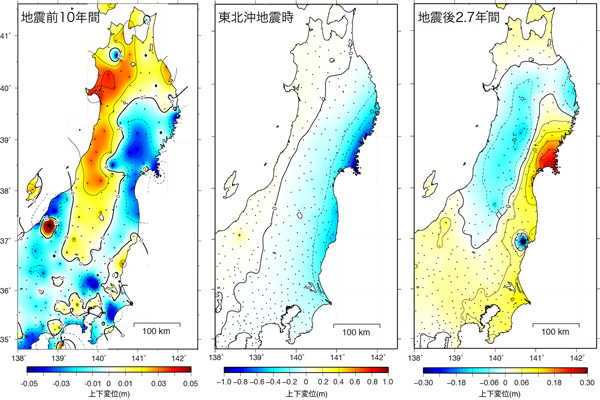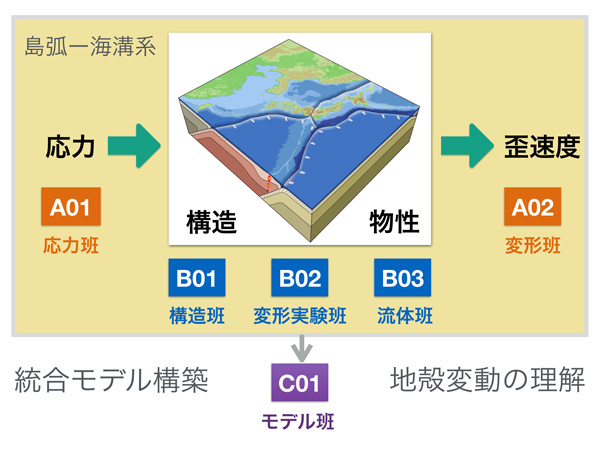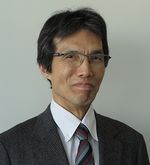Crustal dynamics-Unified understanding of intraisland deformation after the great Tohoku-oki earthquake-
Project Gist
Crustal dynamics, toward the unified understanding of intraisland deformation after the great Tohoku-oki earthquake
Keywords
stress, anelastic strain, the great Tohoku-oki earthquake, crustal fluid, properties of media
Background, Purpose, and Project Achievements
After the 2011 Tohoku-Oki earthquake, various crustal activities that cannot be explained by our standard knowledge have been generated in Japanese Islands. For the purpose of forecasting future crustal activities, we try to clarify the relation between stress, strain, and strain rate and properties of media like elastic constants or viscosity in Japanese Islands, and construct a model that can explain the crustal activities. We submitted a proposal for the Grant-in-Aid for Scientific Research on Innovative Areas in last November. Our team consists of six groups, A01: Crustal stress group, A02: Crustal deformation group, B01: Crustal structure group, B02: Deformation experiment group, B03: Crustal fluid group, and C01: Modeling group. The total number of researchers is 60. After the submission, we held meetings several times to plan a more concrete research program. Fortunately, our proposal was selected for the interviews, scheduled in May, 2014, and finally, the proposal was accepted.
Future Prospects
We would like to come up to expectations to clarify the puzzles concerning the great Tohoku-oki earthquake and to open an avenue for disaster reductions in the future. We will try to solve this problem with flexible thinking suspecting the standard knowledge.
Figures


Principal Investigator

・IIO Yoshihisa
・Disaster Prevention Research Institute (DPRI)
・http://www1.rcep.dpri.kyoto-u.ac.jp/~iio/
・After he worked at Faculty of Science, Kyoto Univ., National Research Institute for Earth Science and Disaster Prevention (NIED), and Earthquake Research Institute (ERI), Univ. of Tokyo, now belongs to Disaster Prevention Research Institute (DPRI), Kyoto Univ. since 2002. His special field is seismology. His main research subjects are researches of the generating process and forecasting of intraplate earthquakes.
